Elder (Sambucus nigra) or Holler as it is called in Austria grows very commonly as a shrub or small tree. Its natural habitat is on river banks and in wet woodlands. The fruits and flowers of the Elder have long been used in traditional Austrian medicine. In fact, Elder is an absolute classic whether it is made into a syrup, roasted, or cooked into a marmalade, one or the other of these delicacies can almost always be found in an Austrian home. There is an old Austrian saying, “Tip your hat to the elder,” expressing deep respect for its innumerable virtues, as it keeps giving so much by way of medicine, food, and drink.
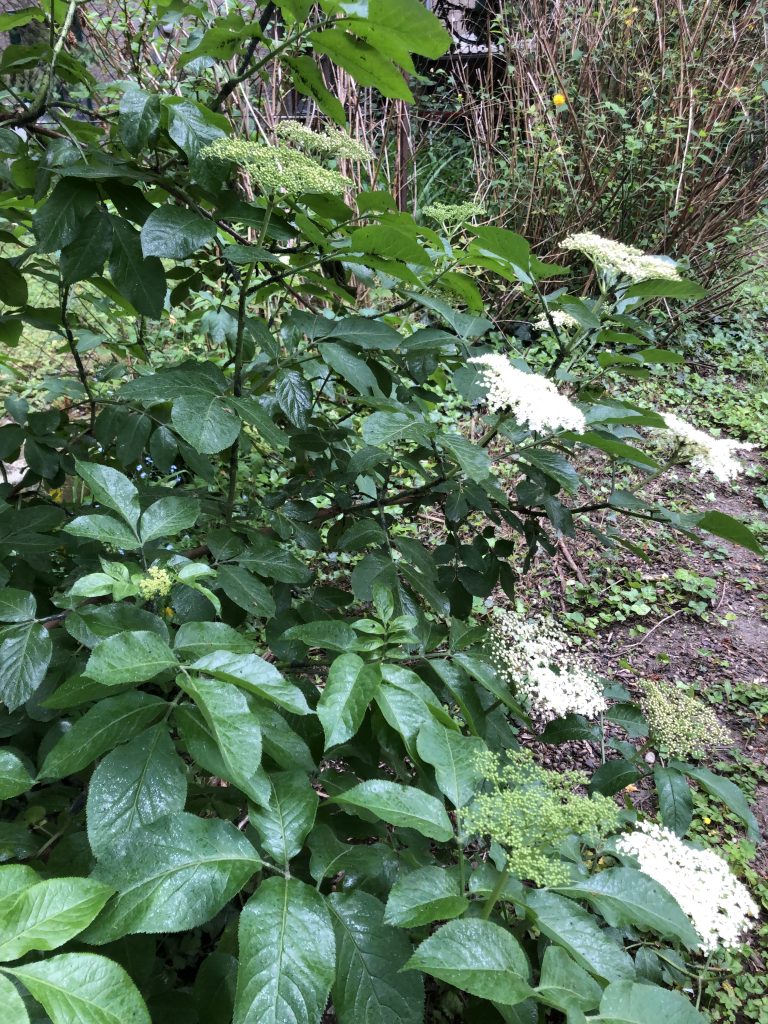
Flowering Elder bush, May 2020
I use black Elderberries for making ink and dyeing purposes but I had not even the slightest inkling that the stem of Elder serves as a great source of natural crafting material. The feature that makes the stem of this bush an excellent source for making art tools is its spongy pith in the center. The pith can easily be pushed out and instead of a lump of wood, you get a hollow tube with the potential to make lots of craft items. I learned about this fact fairly recently from an art coordinator (Sabine Fels) based in Halifax, Canada, who had approached me for a collaborative project focussing on sustainable art practices.
In this blog, I will share with you a very easy way of making your own nifty art tools that are biodegradable, sustainable, and don’t cost a dime. All it requires of you is to venture out, admire, and connect with the abundance and beauty of nature!
Tools required:
- a pair of scissors or secateur
- bamboo skewer or an awl
- optional: sandpaper or an emery board
- optional: a small sharp knife
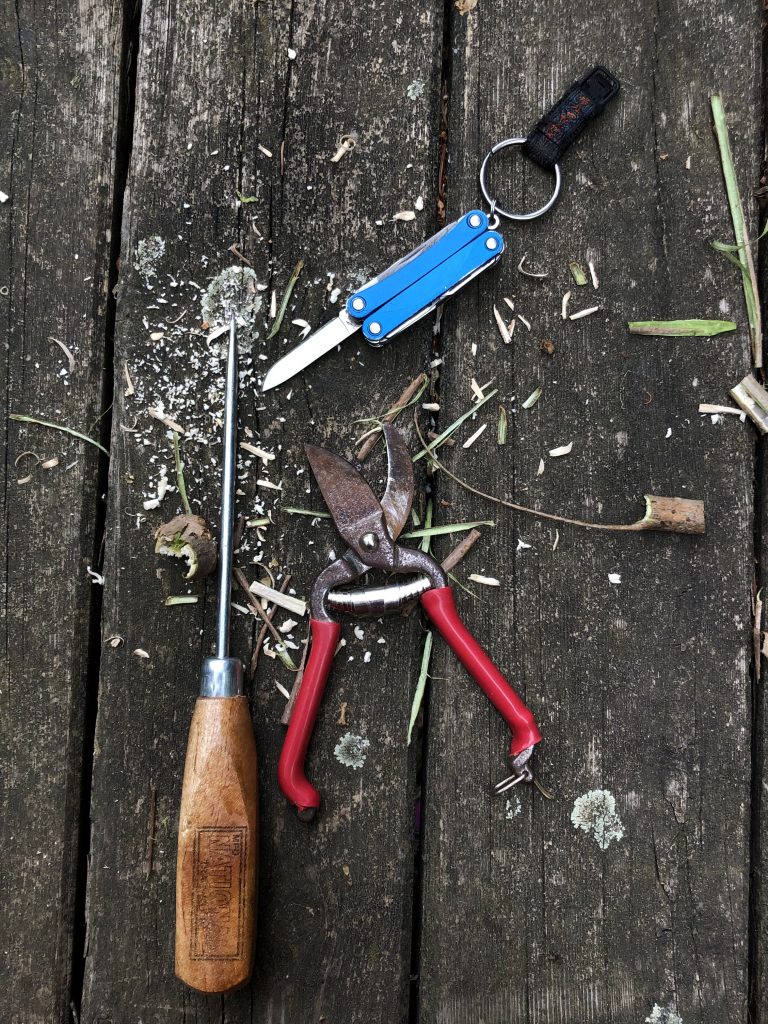
Required tools
How to identify Elder
Elder can easily be identified from its following characteristic features:
Flowers
They are flat-topped clusters of tiny, creamy-white flowers that appear in late May-June with a sweet fragrance. The flowers are mildly toxic when raw and must, therefore, be cooked before consumption. They are mostly used for making cordials or tea or fried to make fritters.
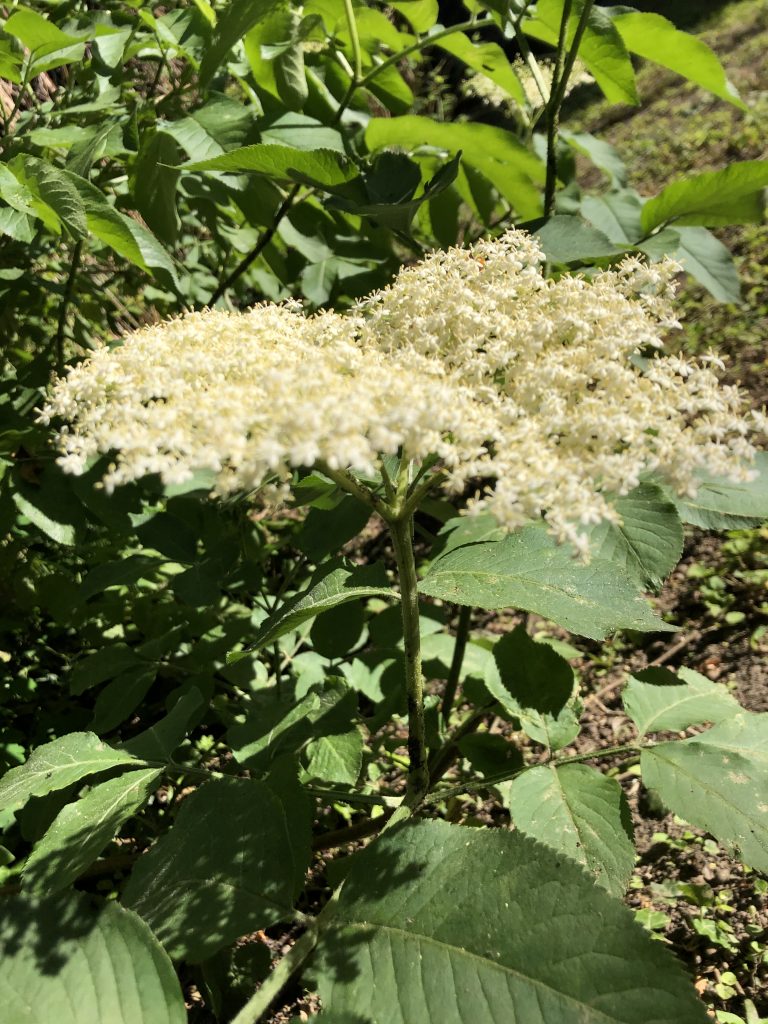
Elderflowers
Leaf
Compound and pinnate (lance-shaped) with five or seven leaflets. Leaflets are arranged opposite to each other with one single leaflet at the tip. The leaves have a serrated edge and are poisonous.
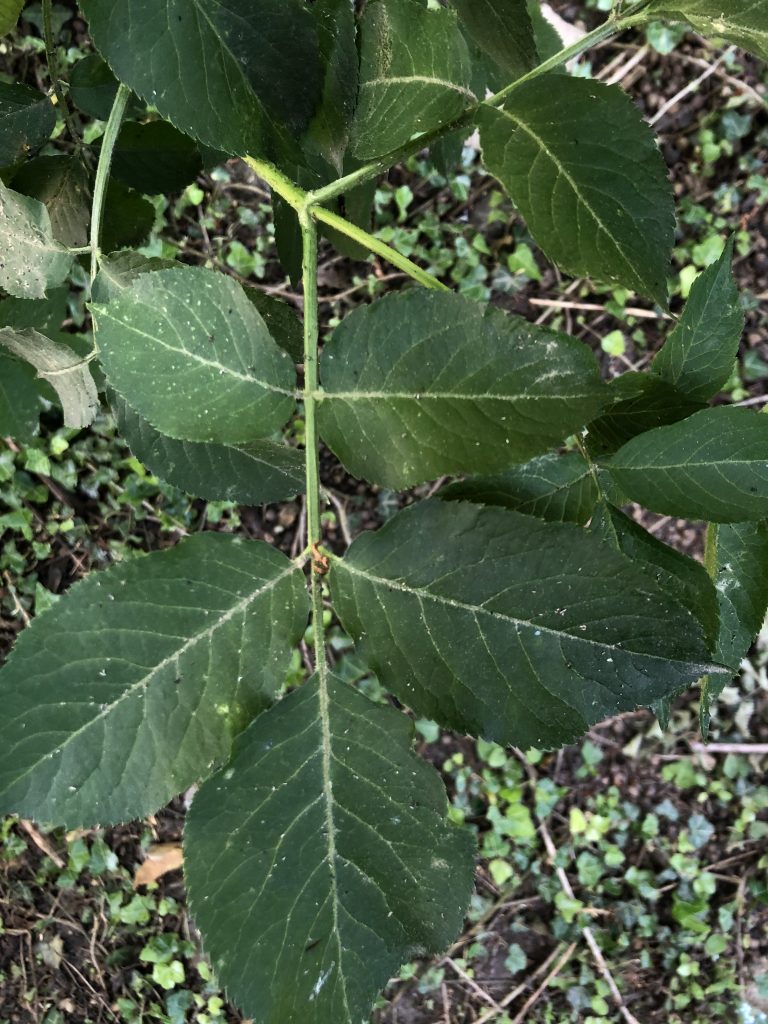
Compound Elder leaf
Bark and Stem
Young twigs of Elder are green, light, and brittle and have a creamy-white pithy tissue inside. As they mature they turn light grey-brown. Stems are often dotted with light brown bumps or warts. As the bark matures it becomes furrowed and corky. Elder wood is hard and yellow-white. The mature wood is ideal for whittling and carving, while smaller stems can be hollowed out for crafting purposes.
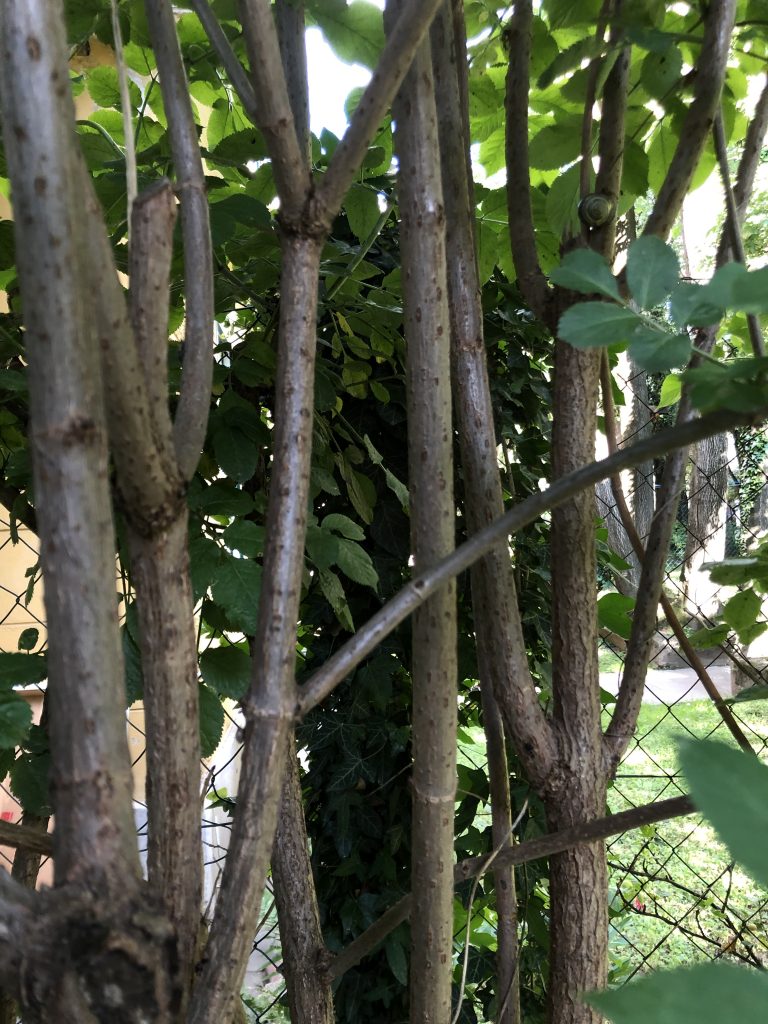
Foraging for Elder twigs
Once you have correctly identified an elder bush, look for twigs that are around 1-1.5cm in diameter and are not too hard as they are prone to splitting. You’ll want at least 3mm of wood around the pith. Also, avoid twigs that are thin with a greenish hue, they will be too young to be used for crafting. Prune mindfully using secateurs, scissors, or a sharp knife.
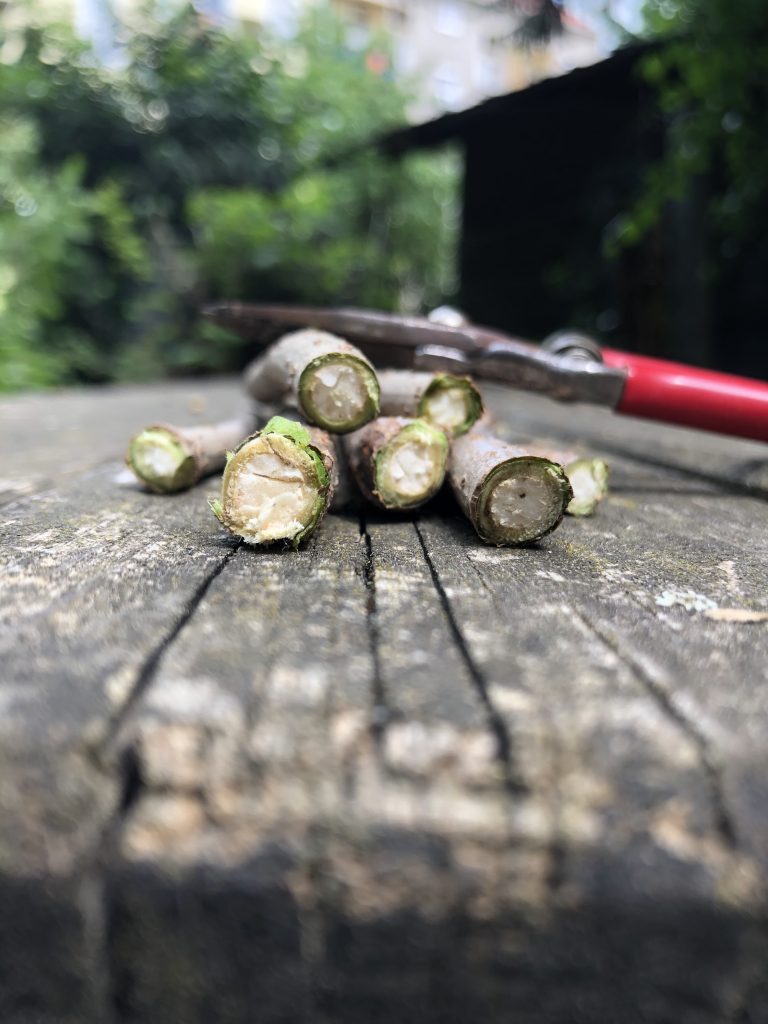
Foraged elder twigs
Process
- Cut the twig to your desired length. Choose a twig that has some character with bumps, nodes, etc. It is your art tool so make something pleasing for yourself!
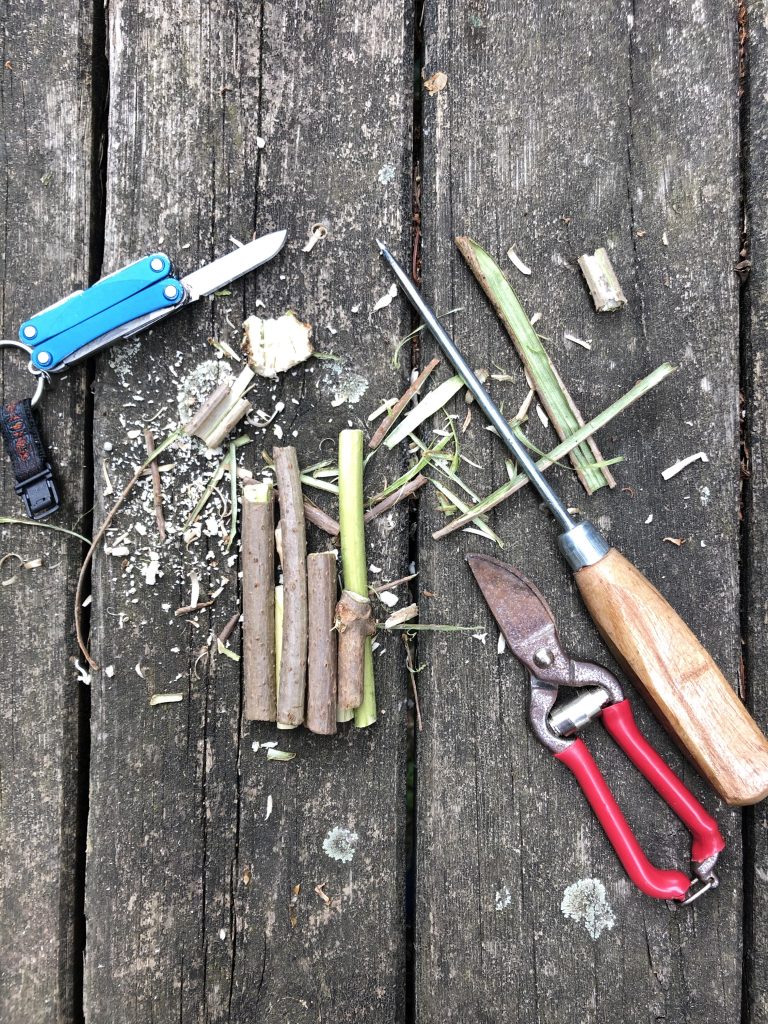
Twigs cut to varying length for crafting
2. Find the center of the pith and push the skewer or an improvised tool gently through it to hollow the twig. This process must be done with care so that it doesn’t cause the wood to split. It is a meditative process!
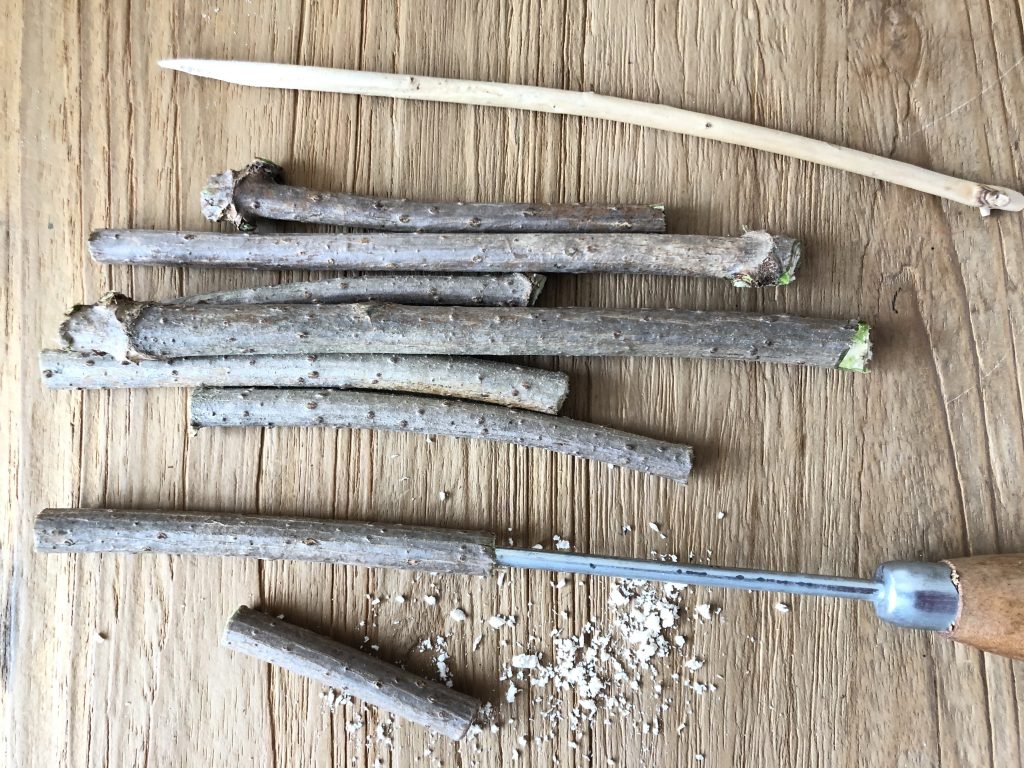
3. Once the twigs have been hollowed take sandpaper or an emery board to smoothen the ends. The twig is now ready to be used either as a dip pen or a natural brush! Note: The wood shrinks after drying.
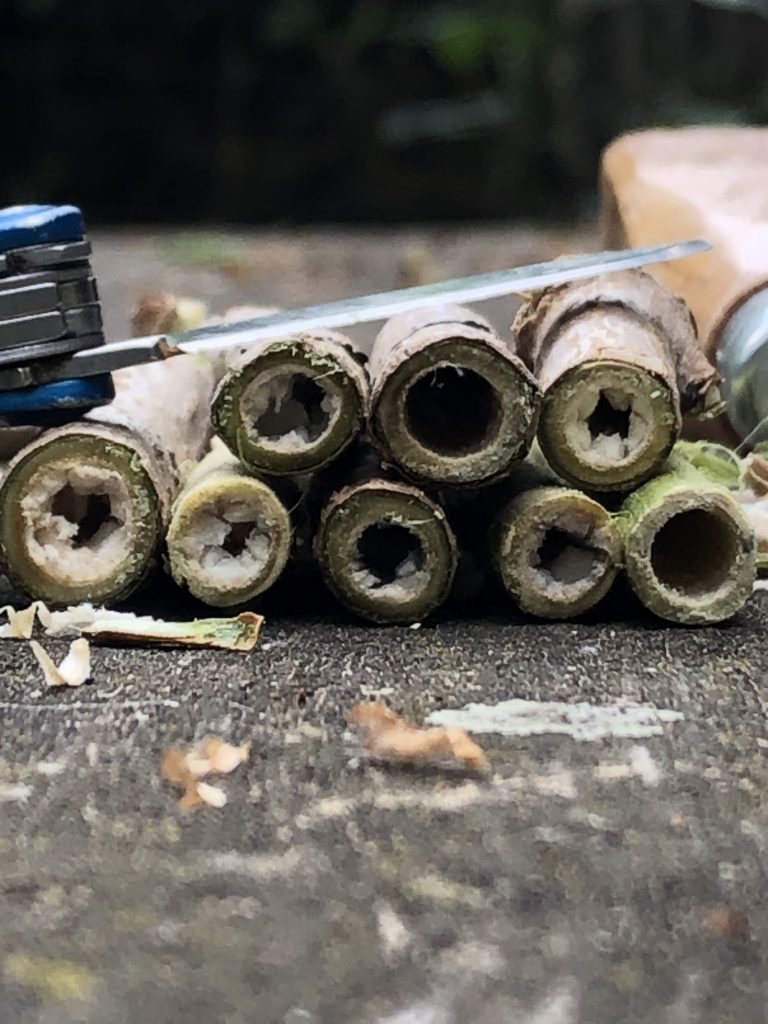
Making art tools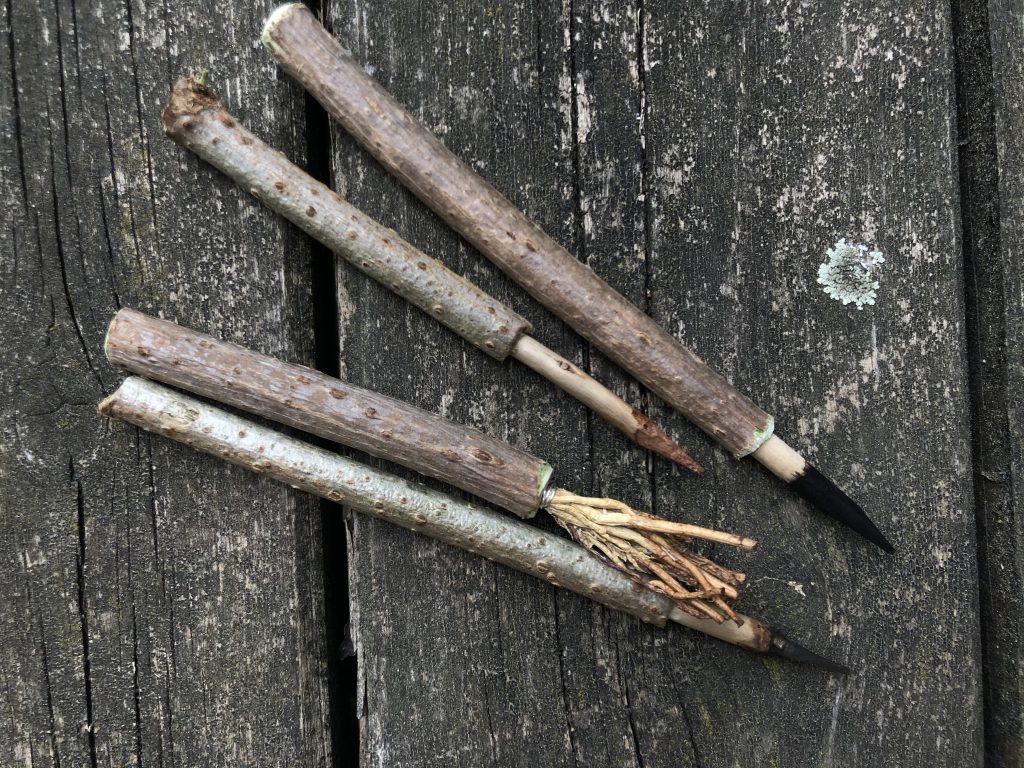 DIY Art tools from an Elder stem, May 2020
DIY Art tools from an Elder stem, May 2020
One can be creative and use anything found in nature that has the potential to be used as a writing or painting tool. I make sketching ‘nibs’ from willow branch that is hard enough to last for long and can easily be chiseled for its use as a nib; bamboo skewer also makes for a great sketching/writing tool; brushes for making texture marks can be made using hay, grass, natural fibers (e.g wool, jute, cotton) or spruce needles, etc. there are innumerable options existing in nature. In the picture below is a brush made using a small bundle of vetiver grass that I pulled out of a body scrubber.
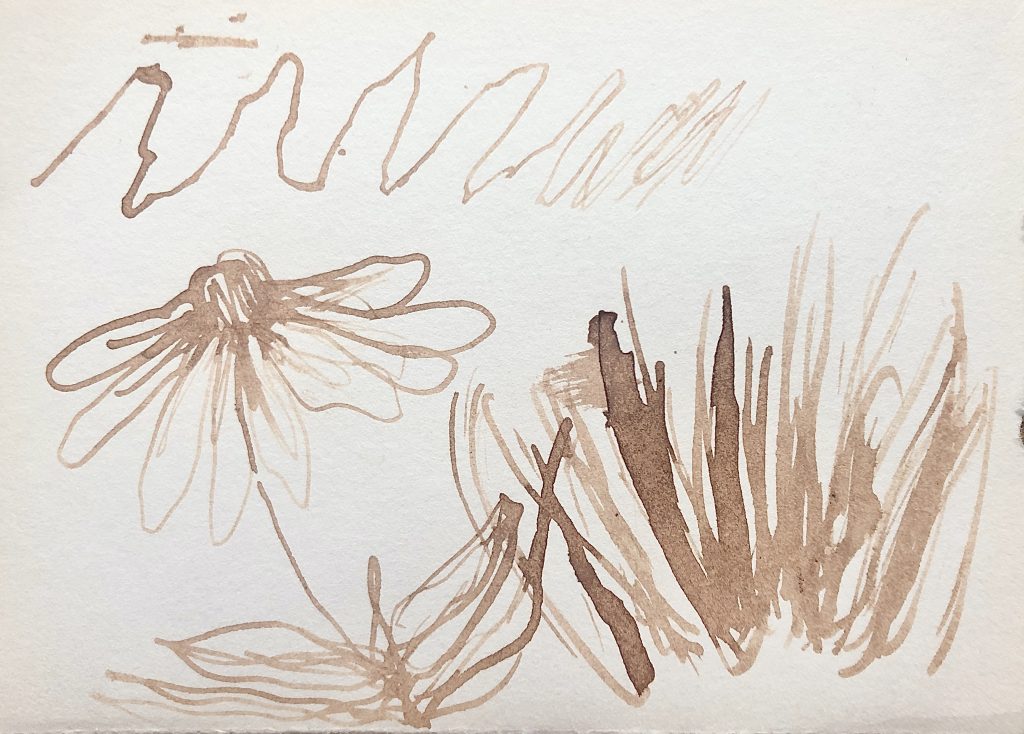
Texture marks with dip pen and brush using DIY avocado ink, May 2020
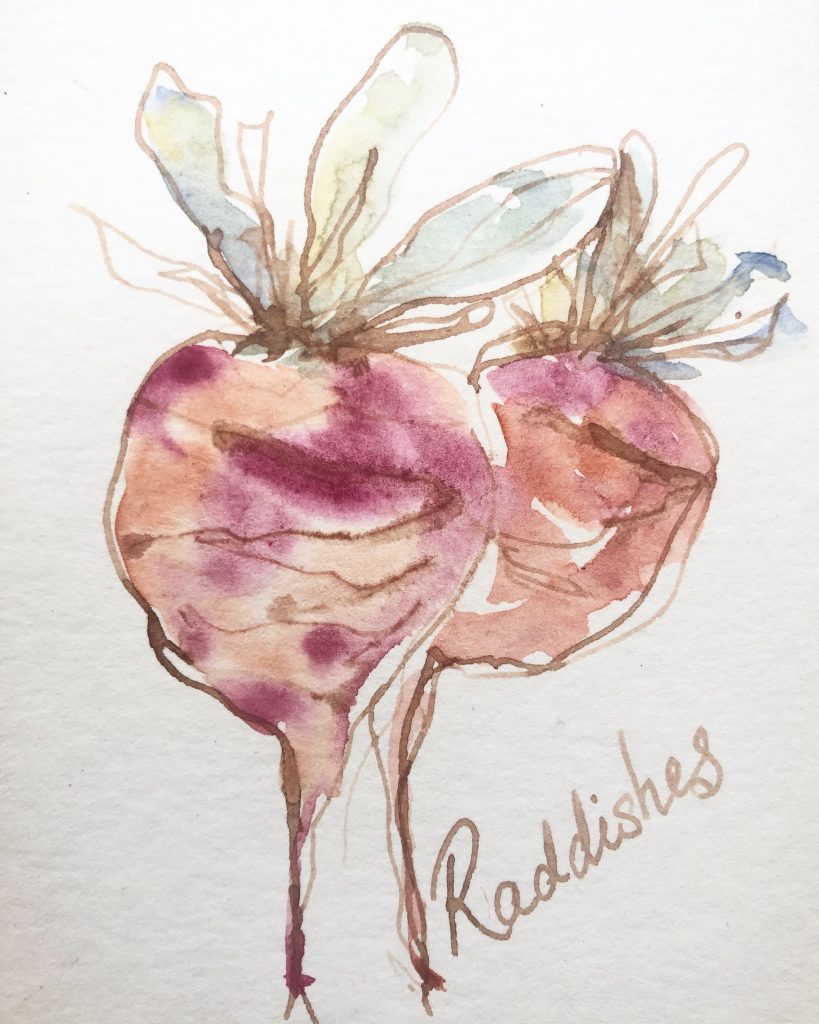
Sketch using a dip pen and natural earth colors
with the leftover twigs, I also made some beads and used them for making a wind chime with glass beads and beach findings.
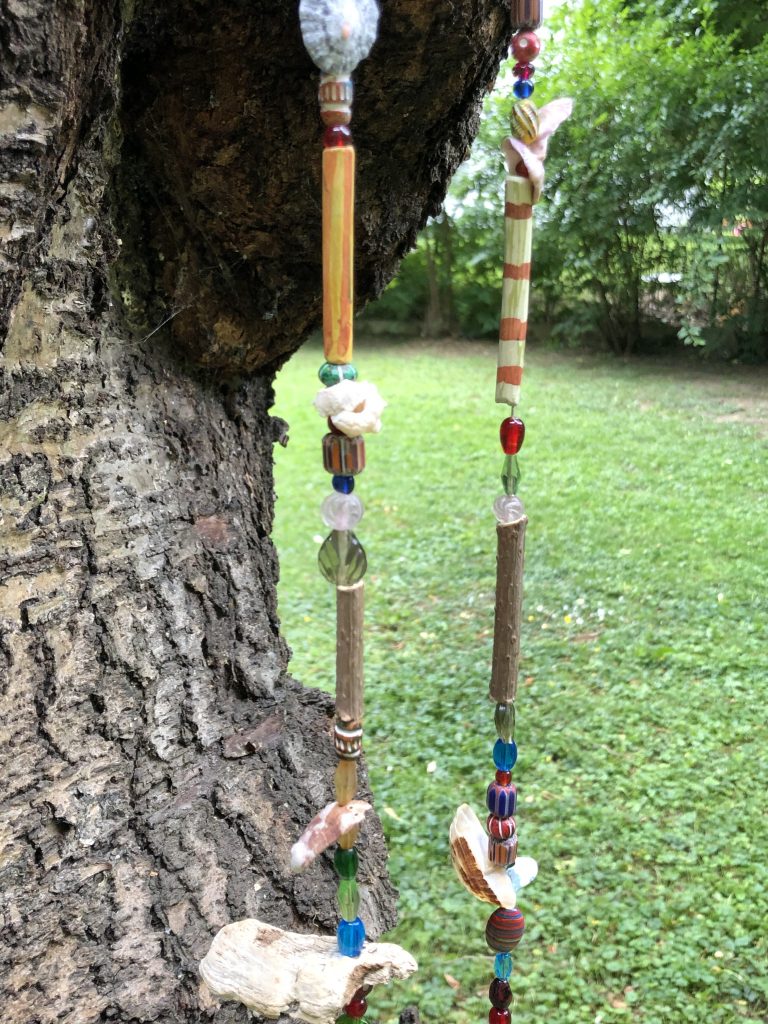
Elder beads painted with natural colors.
Making your own art tools is a wonderful way to experiment and explore how natural resources can be transformed! It not only allows an artist to experiment with unique tools and explore making new marks but also promotes the creative thinking process, and brings us closer to nature!
Recommended link:
Disclaimer: All parts of the elder tree are poisonous to some extent, so do not put them in your mouth and/or give art supplies made out of elder wood to small children. Kindly take the necessary safety precautions when handling sharp objects. The author will not be held responsible and may change the contents of this document at any time, either in whole or in part.
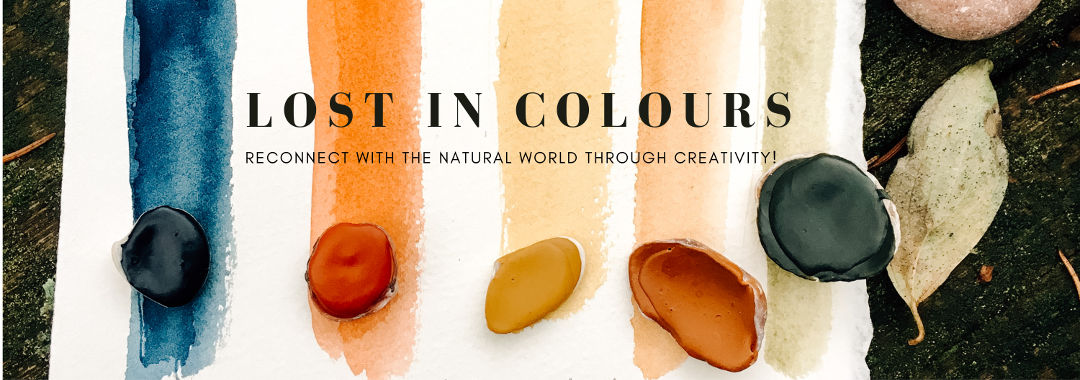
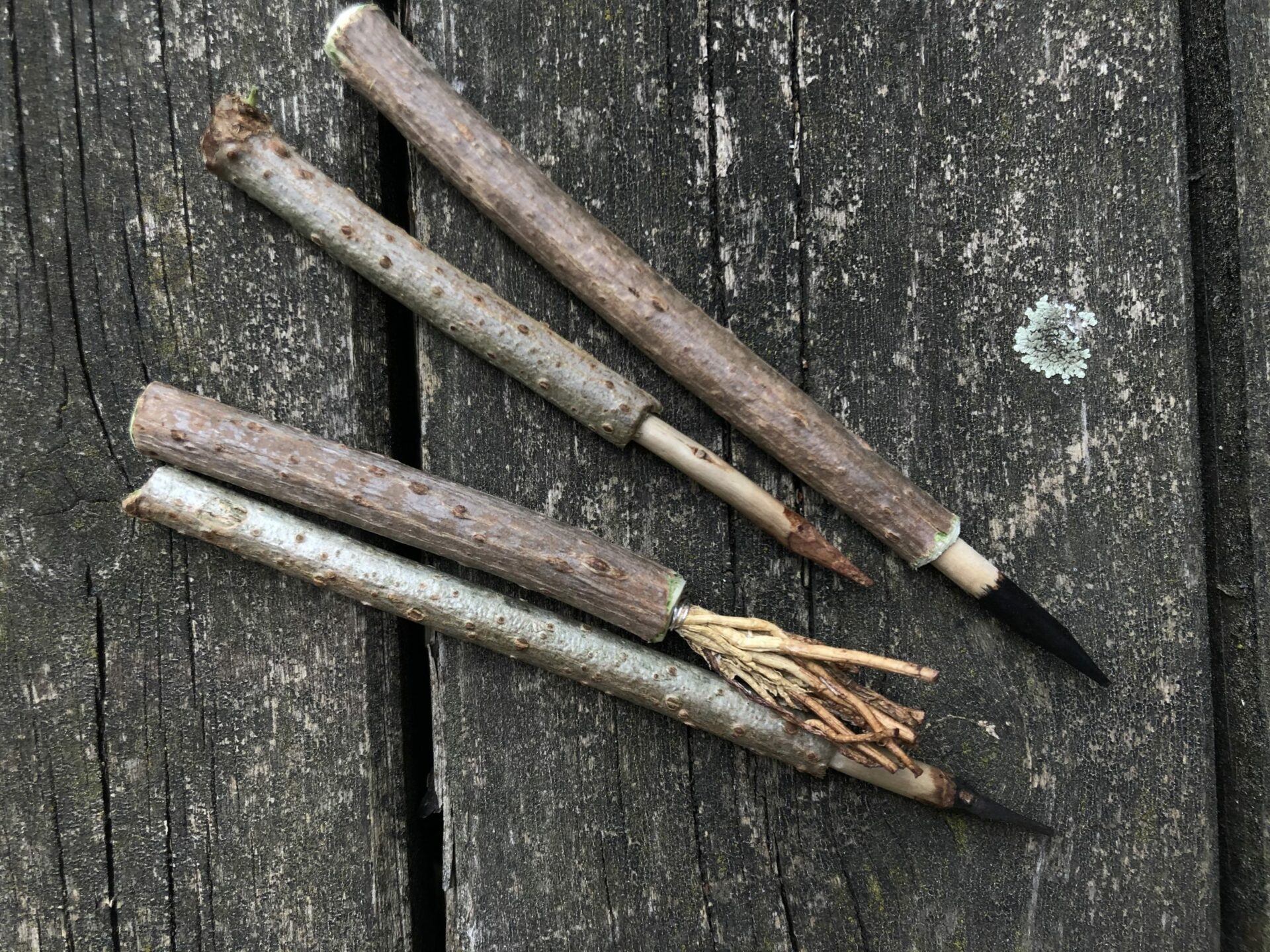
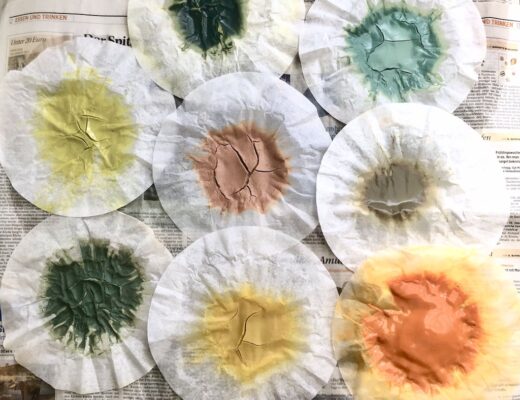
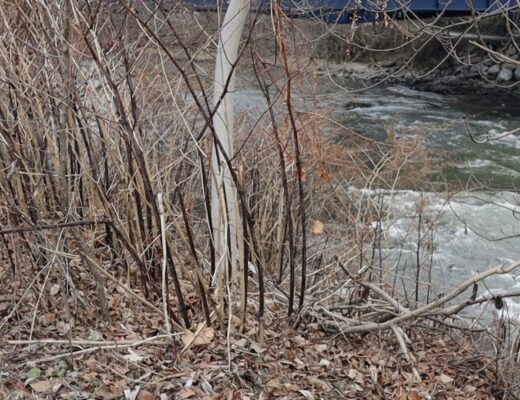
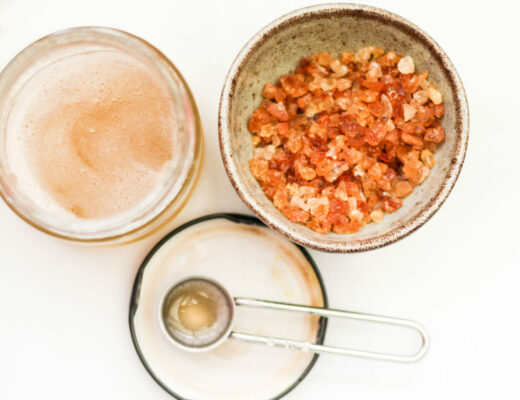
1 Comment
[…] identify an Elder bush/tree read here https://www.lostincolours.com/how-to-make-twig-pens-and-brushes/. Elderberries can be harvested in the late summer months ( July -Autumn). You don’t require much, […]